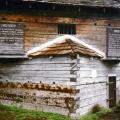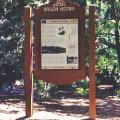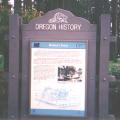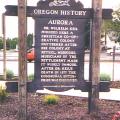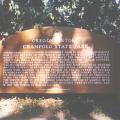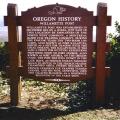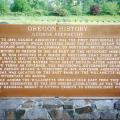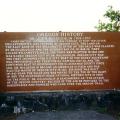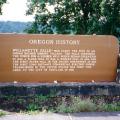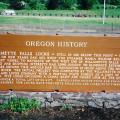Indians inhabited Oregon’s inland valleys for thousands of years before Euro-Americans began to arrive in the late 18th Century.
Just Added
The 90-ton glacial erratic rock at the top of this 1/4 mile-long trail is a stranger from a distant location- it was transported here thousands of years ago on an iceberg in the wake of a cataclysmic flood.
(Sign A) This building was a Military Blockhouse built at the Grand Ronde Agency by Willamette Valley settlers in 1856. U.S.
Many of Oregon's early transportation routes resulted from the efforts of enterprising pioneers like the Boone family of Clackamas County.
During the period of Oregon’s Provisional Government (1841-1849), residents traveled by Indian trails, water courses, or on primitive rough-hewn wagon roads etched by emigrant settlers.
Dr. Wilhelm Keil founded here a Christian co-operative colony patterned after his colony at Bethel, Missouri. Musicians of the settlement made it widely famous. After Dr.
Established as Provisional Government Park in 1913 to commemorate May 2, 1843 meeting of the "Inhabitants of the Willamette Settlements" to organize a civil government.
The first trading post in the Willamette Valley was located on the Prairie Knoll just east of this point.
From 1845 to 1849, George Abernethy was the first Provisional Governor of the Oregon Country, which extended from the Pacific Ocean to the Rocky Mountains and from California to Northe
Chief factor of the Hudson’s Bay Company at Fort Vancouver, philanthropist, and founder of Oregon City.
Was early the site of an Indian salmon fishing village.
Still in use below this point-were opened on New Years Day, 1873, when the steamer Maria Wilkins became the first vessel to navigate up the west end of Willamette Falls.
